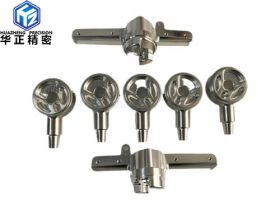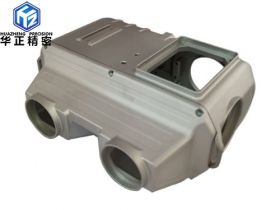Technology Center
Recommended Products
Contact Us
Contact Person: Cindy Zhu
TEL:+86 13418453374
What should be paid attention to when processing non-standard parts?
What should be paid attention to when processing non-standard parts?
When machining non-standard parts in a mechanical processing plant, if the workpiece is too high, it should be roughed with cutting tools of different lengths in layers. After cutting with a knife, use a knife to remove the remaining material. Use flat-bottomed knives to machine planes, use less ball knives, and reduce machining time. If there is a slope and it is an integer, you should use a sloped knife for machining.
At the same time, set the tolerance reasonably, balance the processing accuracy and computer calculation time, make more processing, reduce the empty tool time, the blank hardness is high, choose back milling; the blank hardness is low, so choose forward milling. Rough machining, reverse milling, finishing, and front milling; the tool material has good willfulness and low hardness, suitable for rough machining. The tool material has poor toughness and high hardness, which is suitable for finishing.
For the clamping method of the machined parts processed by the CNC machine tool in the processing plant, the positioning datum and clamping plan should also be selected reasonably. When choosing a fine datum, the two principles of "base level uniformity" and "base level coincidence" should generally be followed. In addition to these two principles, it is also necessary to consider as much as possible to complete the processing of all surfaces in a positioning step. Therefore, it is necessary to choose the positioning method for processing each non-standard part.
When the workpiece is tightened at a time, it should be able to complete the processing of non-standard parts on all the surfaces of the workpiece. When determining the placement of the workpiece on the worktable, the influence of the processing of each station, the length of the tool and the stiffness of the tool on the processing quality should be considered. For jigs used for control processing, adjustable jigs assembled from common components should be selected as much as possible to shorten the production preparation cycle.
When arranging the processing sequence, the processing plant must follow the basic principles of "face first, hole second", "rough first and then fine", and focus on cutting tools to avoid repeated use of the same tool and reduce the number of tool changes and time. For the hole system with high coaxial requirements, the hole system of other coordinate positions should be processed after the hole system is processed in one positioning to eliminate the error caused by repeated positioning, improve the coaxiality of the hole system, select and determine the tool point and Tool change point. Once determined, it should not be replaced.
Specific advantages of non-standard parts processing:
1. High yield. As an industrial product, non-standard parts processing has a high factory yield in the entire industrial production field, which can meet the needs of many factories. When producing industrial products, people often consider their output first. A relatively high product output actually means that the damage rate of the modified product during the production process is relatively small. In other words, some defective products are better than others, and Most of them are better finished products.
2. High production efficiency. Different from general industrial products, the production efficiency of non-standard parts processing is relatively high, so many factories have been put into production one after another. Because if the production efficiency of a product is relatively high, it means that the production cost of the product will be relatively low.















